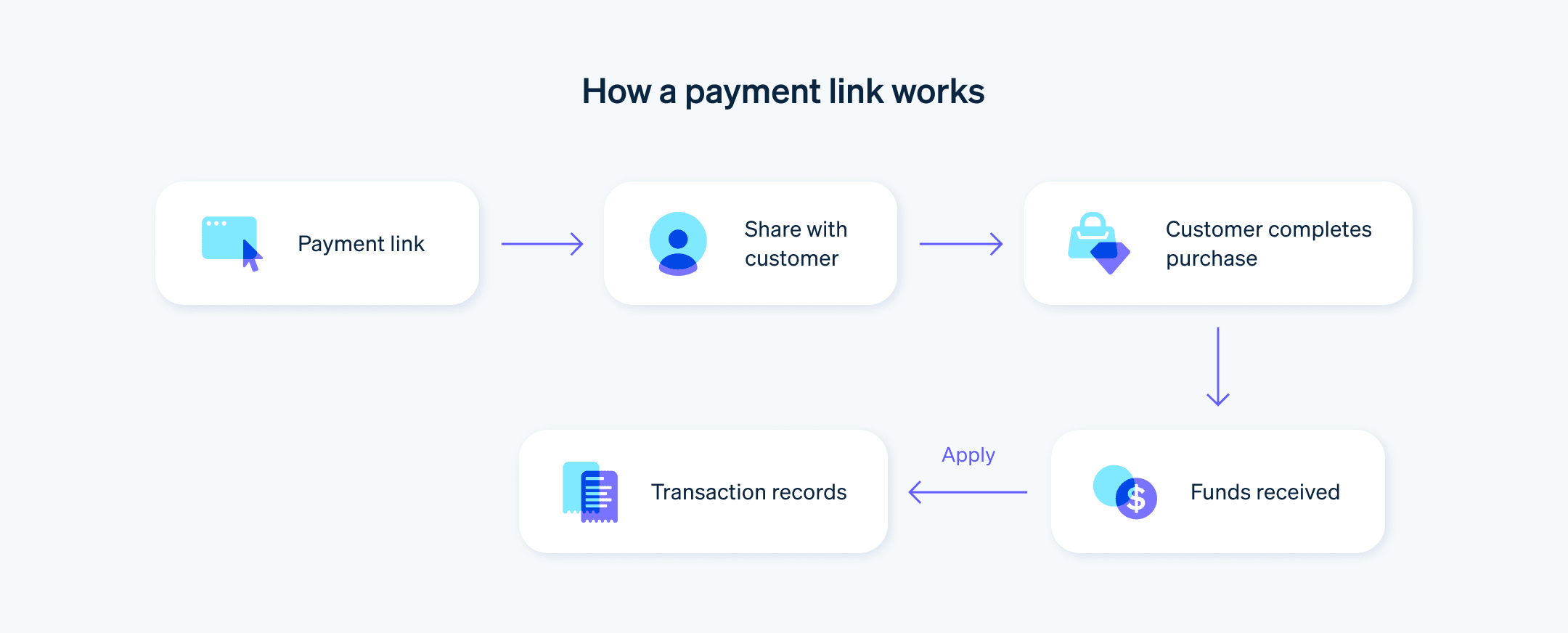หากธุรกิจของคุณขายสินค้าให้กับลูกค้าผ่านช่องทางออนไลน์ คุณคงจะคุ้นเคยกับโครงการต่อเนื่องในการพยายามลดความยุ่งยากในการซื้อของและใช้ทุกวิถีทางที่เป็นไปได้เพื่อเพิ่มการเปลี่ยนเป็นลูกค้าแบบชำระเงิน ไม่ว่าคุณจะขายผลิตภัณฑ์อะไร ไม่ว่าคุณจะขายที่ไหน หรือคุณให้บริการกลุ่มเป้าหมายใด ลิงก์การชำระเงิน เป็นเครื่องมือที่มีความคล่องตัวสำหรับธุรกิจของคุณ หากคุณไม่มีเว็บไซต์ หรือไม่มีเว็บไซต์ที่รองรับอีคอมเมิร์ซ แต่คุณสนใจที่จะขายสินค้า บริการ หรือการสมัครใช้งานให้กับลูกค้าทางออนไลน์ ลิงก์ชําระเงินอาจเป็นทางออกของคุณ ลิงก์ชำระเงินนั้นยังห่างไกลจากคำว่าเครื่องมืออีคอมเมิร์ซแบบครอบจักรวาล แต่กลับเป็นเหมือนโซลูชันแบบ “เครื่องมือเดียว ขนาดใดก็ได้” มากกว่า ซึ่งสามารถจัดการกับความท้าทายที่น่ารำคาญใจที่สุดในการขายให้กับลูกค้าทางออนไลน์
จากการศึกษาของ Baymard Institute พบว่ากว่า 69% ของตะกร้าชอปปิงออนไลน์ถูกละทิ้งก่อนที่จะทําการซื้อ มีสาเหตุหลายประการที่ทำให้เกิดเหตุการณ์นี้ ตั้งแต่ต้นทุนการจัดส่งที่สูงเกินไป ไปจนถึงลูกค้าที่มีแนวโน้มจะซื้อไม่พอใจกับการที่ต้องลงทะเบียนบัญชีเพื่อทำการซื้อสินค้า แต่จากการศึกษานี้ ผู้ซื้อออนไลน์ 17% ในสหรัฐอเมริกาได้ละทิ้งคําสั่งซื้อเนื่องจากกระบวนการชําระเงินที่ "ใช้เวลานาน/ซับซ้อนเกินไป" นี่คือขั้นตอนการเปลี่ยนเป็นผู้ใช้แบบชําระเงินที่ลิงก์ชําระเงินจะสามารถช่วยลดให้เหลือน้อยที่สุดได้ และนี่ก็เป็นเพียงหนึ่งในประโยชน์ของลิงก์ชำระเงิน
ต่อไปนี้คือทุกสิ่งที่ธุรกิจต้องรู้เกี่ยวกับลิงก์ชําระเงินและวิธีใช้ลิงก์เหล่านั้นในสถานการณ์ต่างๆ
บทความนี้ให้ข้อมูลอะไรบ้าง
- ลิงก์ชําระเงินคืออะไร
- ใครบ้างที่ใช้ลิงก์ชําระเงินและเพราะเหตุใด
- Stripe Payment Links
- วิธีสร้าง Stripe Payment Links
- วิธีส่ง Stripe Payment Links
- การติดตามลิงก์ชําระเงิน
- วิธีสร้าง Stripe Payment Links
- ประโยชน์ของลิงก์ชําระเงิน
- ค่าธรรมเนียมลิงก์ชําระเงิน
- ทางเลือกอื่นๆ ของลิงก์ชําระเงิน
ลิงก์ชําระเงินคืออะไร
ลิงก์ชําระเงินคือ URL, ปุ่ม หรือรหัส QR ที่นําลูกค้าไปยังหน้าการชําระเงินที่ไม่ซ้ํากันโดยตรงเพื่อดําเนินการซื้อให้เสร็จสมบูรณ์ คุณสามารถสร้างลิงก์ชําระเงินได้อย่างรวดเร็วและง่ายดาย และเข้าถึงได้อย่างง่ายดายจากเว็บเบราว์เซอร์ ข้อความ SMS อีเมล หรือโพสต์บนโซเชียลมีเดีย ลิงก์ชําระเงินช่วยให้ธุรกิจสร้างหน้าการชําระเงินและแชร์ลิงก์ดังกล่าวกับลูกค้าได้โดยตรง Stripe Payment Links ไม่ต้องเขียนโค้ดและแชร์ได้บ่อยเท่าที่ต้องการในช่องทางใดก็ได้ รวมถึงอีเมล โซเชียลมีเดีย และการส่งข้อความ

ใครบ้างที่ใช้ลิงก์ชําระเงินและเพราะเหตุใด
ลิงก์ชำระเงินสามารถใช้ได้กับธุรกิจใดก็ได้ที่ต้องการอำนวยความสะดวกให้ลูกค้าซื้อสินค้าโดยตรงได้อย่างง่ายดายผ่านทางออนไลน์ หากฟังดูเหมือนคำจำกัดความที่กว้างมาก นั่นก็เพราะว่ามันเป็นแบบนั้นนั่นเอง มีการใช้ลิงก์ชําระเงินในหลากหลายอุตสาหกรรมเพื่อกระตุ้นให้ลูกค้าซื้อสินค้าหรือบริการกับผู้บริโภคดิจิทัลทุกกลุ่ม สิ่งที่เป็นจุดเด่นของลิงก์ชำระเงินคือความหลากหลาย คุณสามารถใช้ลิงก์นี้ในการซื้อสินค้าทางออนไลน์ได้เกือบทุกประเภท
การใช้ลิงก์ชำระเงินสามารถอำนวยความสะดวกในการทำธุรกรรมของลูกค้าได้ในสถานการณ์ทั่วไปบางประการดังนี้
คุณไม่มีเว็บไซต์
หรืออย่างน้อยคุณยังไม่มีเว็บไซต์ที่รองรับอีคอมเมิร์ซ บางทีคุณอาจยังอยู่ระหว่างการสร้างเว็บไซต์อีคอมเมิร์ซ หรืออาจไม่จําเป็นต้องประมวลผลการชําระเงินออนไลน์ ดังนั้นคุณจึงไม่มีแผนที่จะสร้างเว็บไซต์เลย ลิงก์ชําระเงินเป็นโซลูชันที่เรียบง่ายและเชื่อถือได้สําหรับธุรกิจที่ต้องการดําเนินการชําระเงินทางออนไลน์ แต่ไม่มีเว็บไซต์ที่รองรับการชําระเงินคุณทําการตลาด SMS อย่างมาก
ลิงก์ชําระเงินเป็นเครื่องมือที่เหมาะสําหรับการส่งข้อความถึงลูกค้า หากคุณมีรายการการตลาดแบบ SMS ที่แข็งแกร่ง และเป็นช่องทางการขายที่มีความหมายสำหรับธุรกิจของคุณ ลิงก์ชำระเงินก็เป็นทางเลือกที่ไม่ต้องคิดมากคุณมีกลุ่มลูกค้าหลายกลุ่ม
หากคุณมีกลุ่มเป้าหมายที่ต่างกันสําหรับธุรกิจ และคุณมีแนวโน้มที่จะใช้ข้อความที่มีการกําหนดเป้าหมายสําหรับธุรกิจแต่ละกลุ่ม ลิงก์ชําระเงินจะช่วยให้คุณสร้างหน้าการชําระเงินที่ปรับให้เหมาะสมกับกลุ่มลูกค้าแต่ละรายได้คุณระดมทุนหรือรวบรวมเงินบริจาค
เมื่อคุณจําหน่ายสินค้าและบริการสําหรับผู้บริโภค สิ่งสําคัญคือคุณต้องมีกระบวนการชําระเงินที่ราบรื่นและมีประสิทธิภาพ แต่เมื่อคุณพยายามเก็บเงินบริจาคเพื่อการกุศล นี่จะกลายเป็นเรื่องสําคัญมากยิ่งขึ้น หากคุณต้องการให้ผู้คนบริจาคเงิน กลไกนั้นจะต้องง่ายดายที่สุด หรือคุณอาจกลายเป็นผู้สนับสนุนที่ดำเนินการล้มเหลว ลิงก์ชําระเงินเป็นวิธีที่รวดเร็วและตรงใจเพื่อให้ผู้คนบริจาคเงินให้แก่แคมเปญระดมทุนหรือบริจาคเพื่อการกุศลโดยไม่ยุ่งยากและเสียเวลาคุณต้องรับการชําระเงินที่จุดขาย แต่ไม่มีฮาร์ดแวร์
สมมติว่าคุณเป็นธุรกิจที่ขายเนยถั่วลิสงในตลาดเกษตรกรในภูมิภาคที่คุณอาศัยอยู่ ใกล้จะหมดวันแล้วและมีลูกค้ารายหนึ่งซึ่งไม่มีเงินสดเข้ามาที่ร้านเพื่อต้องการซื้อสินค้า แต่พาร์ทเนอร์ทางธุรกิจของคุณได้เก็บเครื่องอ่านบัตรและกลับไปเมื่อไม่กี่นาทีก่อนหน้านี้ แทนที่จะต้องปฏิเสธผู้มีโอกาสเป็นลูกค้า คุณสามารถดึงโทรศัพท์ออกมาแล้วสร้างลิงก์ชําระเงินสําหรับผลิตภัณฑ์นั้นได้อย่างรวดเร็วและส่งข้อความไปให้ลูกค้า มีเหตุผลหลายประการที่ธุรกิจอาจต้องรับชําระเงินโดยไม่ต้องใช้เครื่องอ่านบัตร และลิงก์ชําระเงินเป็นเครื่องมือที่อเนกประสงค์ที่สามารถอํานวยความสะดวกในการชําระเงินในสถานการณ์ต่างๆ เหล่านี้ได้ยอดขายของคุณเดินหน้าไปอย่างรวดเร็ว
มีสินค้าวางจำหน่ายตรงเวลา มีการจัดเตรียมสต็อกสินค้าใหม่ล่วงหน้า และยอดขายของคุณดำเนินไปอย่างรวดเร็ว ซึ่งไม่ว่าใครก็ถือว่านี่เป็นสถานการณ์ที่ดี แล้วคุณจะทําให้ผลิตภัณฑ์ของคุณน่าตื่นเต้นที่สุดได้อย่างไร กลยุทธ์หนึ่งคือให้ลูกค้าลงทะเบียนรับข้อความอัปเดต จากนั้นส่งลิงก์ชําระเงินให้ลูกค้าเมื่อถึงเวลา วิธีนี้จะช่วยให้คุณใช้ประโยชน์จากความเร่งด่วนและความขาดแคลนของผลิตภัณฑ์ที่เป็นที่ต้องการเหล่านี้ได้ โดยเสนอช่องทางให้ลูกค้าดำเนินการได้อย่างรวดเร็ว
Stripe Payment Links
Stripe Payment Links สามารถทำงานเป็นส่วนประกอบที่ยืดหยุ่นในระบบการชำระเงินที่ใหญ่กว่าสำหรับธุรกิจที่รับชำระเงินผ่านช่องทางต่างๆ ทางออนไลน์ ที่จุดขาย หรือทั้งสองทาง แต่ Payment Links ยังสามารถใช้งานได้กับธุรกิจใหม่ๆ ที่ยังไม่มีเว็บไซต์อีกด้วย โดยเป็นวิธีเริ่มต้นการขายผลิตภัณฑ์ได้อย่างรวดเร็วและง่ายดาย Stripe Payment Links รองรับวิธีการชําระเงินมากกว่า 20 วิธี ซึ่งรวมถึงบัตรเครดิตและเดบิตและกระเป๋าเงินดิจิทัล เช่น Apple Pay และ Google Pay หน้าการชําระเงินมีให้บริการในกว่า 30 ภาษา และจะได้รับการแปลเป็นภาษาที่ลูกค้าต้องการโดยอัตโนมัติตามที่กําหนดไว้ในเบราว์เซอร์
Stripe Payment Links ช่วยให้ผู้ใช้เพิ่มสีและองค์ประกอบการสร้างแบรนด์อื่นๆ แบบกำหนดเองลงในหน้าการชําระเงินได้ เพิ่มนโยบายของร้านและข้อมูลติดต่อ สร้างรหัส QR สําหรับลิงก์ชําระเงิน ตลอดจนเปิดใช้รหัสโปรโมชัน การขายที่เกี่ยวโยง และการขายต่อยอด
วิธีสร้าง Stripe Payment Links
Stripe Payment Links ใช้ได้กับบัญชี Stripe เท่านั้น หากคุณไม่มีบัญชี คุณจะต้องลงทะเบียนก่อน เมื่อลงทะเบียนใช้ Stripe และเข้าสู่ระบบแล้ว ให้ไปที่แดชบอร์ดของคุณ จากหน้านี้ ให้คลิกที่ Payment Links และทําตามขั้นตอนต่อไปนี้
- เลือก +เพิ่มผลิตภัณฑ์ใหม่
- กรอกรายละเอียดผลิตภัณฑ์
- คลิกเพิ่มผลิตภัณฑ์
- คลิกถัดไป
- คลิกสร้างลิงก์
หลังจากสร้างลิงก์ชําระเงินใหม่แล้ว คุณจะเห็นหน้ารายละเอียดโดยอัตโนมัติ เท่านี้ ลิงก์ก็พร้อมแชร์แล้ว
สําหรับธุรกิจที่ต้องการสร้างลิงก์ชําระเงินในระดับที่ใหญ่ขึ้น Stripe ให้ผู้ใช้สร้างลิงก์ชําระเงินโดยใช้ API
วิธีส่ง Stripe Payment Links
การส่ง Stripe Payment Links ก็เหมือนการส่งลิงก์อื่นๆ: คัดลอกและวางได้ทุกที่ที่คุณต้องการแชร์ คุณสามารถใช้ลิงก์เดียวกันซ้ําได้หลายครั้งเท่าที่ต้องการ
การติดตามลิงก์ชําระเงิน
เมื่อส่งลิงก์ชําระเงินออกไปแล้ว คุณจะติดตามประสิทธิภาพการทํางานได้จากแดชบอร์ด
ประโยชน์ของลิงก์ชําระเงิน
ลักษณะที่เรียบง่ายของลิงก์ชำระเงินทำให้ลิงก์เหล่านี้มีความน่าดึงดูดใจสำหรับธุรกิจเป็นอย่างยิ่ง หากคุณแจ้งให้ธุรกิจทราบว่าพวกเขามีสิทธิ์เข้าถึงหน้าผลิตภัณฑ์แบบสแตนด์อโลนที่อํานวยความสะดวกในการซื้อสินค้าโดยที่ไม่ต้องคลิกเพิ่มไปยังหน้าอื่นๆ ลูกค้าก็จะมองเห็นโอกาสทันที
นอกเหนือจากความเรียบง่ายที่หรูหราของลิงก์ชำระเงินแล้ว ยังมีข้อดีที่โดดเด่นอื่นๆ อีกบางประการ:
ประสบการณ์การชําระเงินที่ง่ายขึ้นสําหรับลูกค้า:
คุณสามารถส่งลิงก์ชําระเงินผ่านอีเมลและข้อความ หรือแชร์บนโซเชียลมีเดียได้ ลูกค้าทําธุรกรรมให้เสร็จสมบูรณ์ได้ด้วยการคลิกเพียงครั้งเดียว ไม่ง่ายไปกว่านี้อีกแล้วอัตราการเปลี่ยนเป็นผู้ใช้แบบชําระเงินที่ดีกว่า:
ไม่ว่าอัตราการละทิ้งตะกร้าชอปปิงของคุณจะเป็นอย่างไร อาจจะลองนึกภาพว่าลดลงอย่างมีนัยสําคัญ นั่นจะเป็นพื้นที่ที่ลิงก์ชําระเงินสามารถย้ายเข็มโฟกัสไปที่ธุรกิจของคุณได้อย่างจริงจัง ความยืดหยุ่นของลิงก์ชำระเงินสามารถช่วยให้คุณเข้าถึงกลุ่มเป้าหมายใหม่ๆ และกำหนดกลุ่มเป้าหมายที่มีอยู่ของคุณได้ดีขึ้น ทั่วทุกฝ่าย ลิงก์ชําระเงินสามารถเพิ่มอัตราการเปลี่ยนเป็นผู้ใช้แบบชําระเงินได้ดีกว่าวิธีการชําระเงินอื่นๆปรับแต่งได้สูง:
ในขณะที่เว็บไซต์อีคอมเมิร์ซของคุณให้คุณมีประสบการณ์การชำระเงินเพียงครั้งเดียวซึ่งต้องเกี่ยวข้องกับกลุ่มเป้าหมายทุกกลุ่ม ลิงก์ชำระเงินจะให้กลไกแบบไดนามิกที่ไม่สิ้นสุดแก่คุณในการสร้างหน้าการชำระเงินที่กำหนดเอง ไม่ว่าจะสร้างลิงก์ชําระเงินที่เกี่ยวข้องกับแคมเปญที่ต้องการ หรือสร้างประสบการณ์ตามความต้องการของลูกค้ากลุ่มใดกลุ่มหนึ่ง ลิงก์ชำระเงินเป็นวิธีในการสร้างช่วงเวลาการชำระเงินที่กำหนดเองได้มากเท่าที่คุณต้องการโดยมีข้อผูกมัดเพียงเล็กน้อย
ค่าธรรมเนียมลิงก์ชําระเงิน
ลิงก์ชําระเงินผสานการทํางานกับโมเดลค่าบริการของ Stripe อยู่แล้ว ซึ่งหมายความว่าธุรกิจไม่ต้องจ่ายค่าธรรมเนียมเพิ่มเติมใดๆ ในการสร้างลิงก์ชําระเงินและใช้ลิงก์เหล่านั้นเพื่อรับชําระเงิน หากคุณใช้ลิงก์ชําระเงินร่วมกับโซลูชันอื่นๆ ของ Stripe เช่น Billing สําหรับการชําระเงินตามแบบแผนล่วงหน้าหรือ Stripe Tax คุณก็จะยังคงชําระค่าธรรมเนียมที่เกี่ยวข้องกับบริการเหล่านั้น เช่น เดียวกันกับที่คุณทําธุรกรรมโดยวิธีการอื่น แต่นอกเหนือจากนั้นแล้ว การใช้ลิงก์ชําระเงินไม่มีค่าใช้จ่าย Stripe ผู้ใช้เพิ่มเติม
ทางเลือกอื่นๆ ของลิงก์ชําระเงิน
สําหรับธุรกรรมออนไลน์ ทางเลือกหลักสําหรับลิงก์ชําระเงินก็คือการมีเว็บไซต์ที่ตั้งค่าไว้เพื่อสนับสนุนอีคอมเมิร์ซ เมื่อคุณมีเว็บไซต์ที่ให้ลูกค้าทำการซื้อสินค้าทางออนไลน์ และคุณได้รับการสนับสนุนการประมวลผลการชำระเงินแล้ว คุณสามารถใช้ลิงก์โดยตรงไปยังหน้าผลิตภัณฑ์ได้ โดยแชร์ลิงก์เหล่านี้ในลักษณะเดียวกับที่คุณทำกับลิงก์การชำระเงิน แน่นอนว่าลิงก์เหล่านี้จะไม่มีฟังก์ชันของลิงก์ชําระเงิน แต่ยังคงนําทางสู่การเข้าชมเว็บไซต์ของคุณและหวังว่าจะไปยังขั้นตอนการชําระเงินด้วย
ความจริงก็คือ ทางเลือกอื่นๆ สำหรับลิงก์ชำระเงินนั้นท้ายที่สุดก็เน้นย้ำให้เราเห็นถึงประโยชน์ที่เป็นเอกลักษณ์ของลิงก์ชำระเงินเอง ไม่มีทางเลือกอื่นใดอีกแล้วที่จะช่วยให้ลูกค้าดำเนินการและชำระเงินออนไลน์ได้โดยตรงและง่ายดายเท่านี้ โดยไม่ต้องผ่านขั้นตอนการชำระเงินที่ซับซ้อนกว่า
เนื้อหาในบทความนี้มีไว้เพื่อให้ข้อมูลทั่วไปและมีจุดประสงค์เพื่อการศึกษาเท่านั้น ไม่ควรใช้เป็นคําแนะนําทางกฎหมายหรือภาษี Stripe ไม่รับประกันหรือรับประกันความถูกต้อง ความสมบูรณ์ ความไม่เพียงพอ หรือความเป็นปัจจุบันของข้อมูลในบทความ คุณควรขอคําแนะนําจากทนายความที่มีอํานาจหรือนักบัญชีที่ได้รับใบอนุญาตให้ประกอบกิจการในเขตอํานาจศาลเพื่อรับคําแนะนําที่ตรงกับสถานการณ์ของคุณ